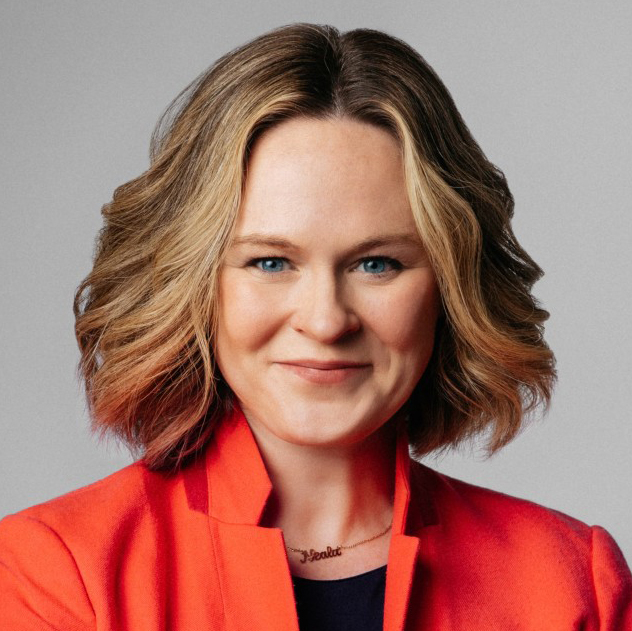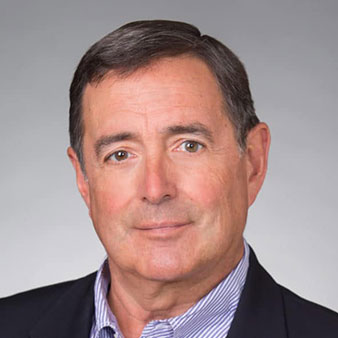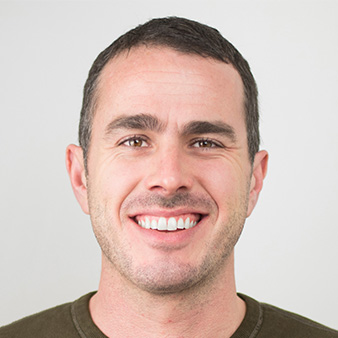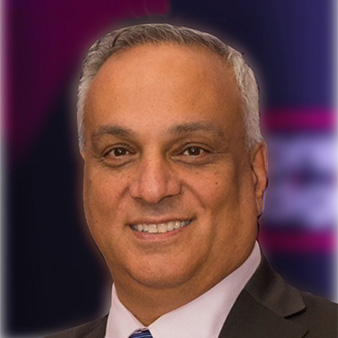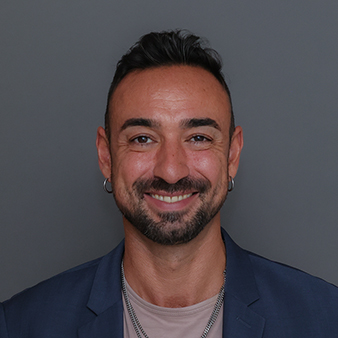| 9:00-10:00am | Registration and Breakfast |
| 10:00-10:15am | Opening Remarks
Scott McDonald, Ph.D. – President & CEO, ARF |
| | Section I. The State of Attention
Has the industry moved closer to a shared understanding of the role of attention in advertising and of variability in attention measurement? What advancements in attention measurement have we observed over the past year? What are the new trends in ad placement and formats? What challenges and future directions should we consider in attention measurement (e.g., multitasking and screen fragmentation, attention-based” ad pricing, AI applications). |
| 10:15–10:45am | Perspectives on Attention Metrics & Phase 3 Preliminary Findings
This two-part session examines the evolving role of attention metrics in advertising effectiveness. Discover new insights from the ARF’s latest industry survey, which reveals how advertisers and agencies utilize attention metrics—from creative testing and media planning to campaign benchmarking—and where their priorities and methods diverge. Following that, hear about Phase 3 of the ARF’s Attention Measurement Validation Initiative, which includes findings from Stage 1 and an update on the research design for Stage 2. This phase focuses on measuring attention across media platforms and placements, with +/- 8 attention measurement companies analyzing live campaigns from 4-5 brands across TV, social, and digital.
Tracy Adams, Ph.D. – Senior Director, Research & Insights, ARF
Paul Donato – Chief Research Officer, ARF |
| 10:45-11:10am | Agency Reactions: Making Sense of Attention in Advertising
Leaders from top agencies respond to the preliminary results of the Attention Measurement Validation Initiative. Panelists will reflect on what these insights mean for their organizations and discuss how attention metrics shape creative strategies, media planning, and campaign evaluation decisions. The conversation will also address broader questions: What role should attention play in the marketing mix? How actionable is it today? And what is needed to make attention a more consistent driver of strategy and outcomes?
Neala Brown – SVP, Strategy & Operations, North America, TEADS
Jerry Nevins – Group Director of Marketing Effectiveness and Intelligence, VML
Moderator: Charlotte Lipman – Senior Director, Research & Insights, DIRECTV
|
| | Section II. Evolving Metrics As attention measurement evolves from proxy-based metrics to more granular and behaviorally informed models, are certain attention metrics proving more reliable or scalable than others? What attention signals—such as dwell time, inferred eye tracking, skip rates, or interaction-based scoring—are emerging as preferred tools for enhancing ad effectiveness, personalization, and media pricing? Are we witnessing a shift from time-based exposure to quality of engagement models as the new currency of attention? |
| 11:10-11:40am | The IAB and MRC Joint Attention Measurement Guidelines
Learn about the newly released IAB/MRC Attention Measurement Guidelines, now open for 60-day public comment as of May 12, 2025. What was the collaborative process behind the Guidelines? Who was the working group that shaped them? How does the framework address key focus areas and methodologies in attention measurement? The session will also explore practical applications for buyers, sellers, and practitioners and preview how the Guidelines will inform future audits and validation.
Angelina Eng – VP Measurement, Addressability & Data Center, IAB
Ron Pinelli – SVP of Digital Research and Standards, MRC |
11:40am–12:00pm
| The Value of Universal Facial Signals in Advertising and Attention Research
Despite being one of the most widely used non-verbal methods in research to understand viewer engagement, facial coding still stirs debate. Learn about new evidence, based on analysis of the Affectiva database of 14 million face videos, which reveals universals in facial expressions and demonstrates that these expressions have predictive power concerning key advertising outcomes. Insight will also be shared about the role of context in interpreting biometric signals, to aid in the effective use of such tools by the marketing industry.
Graham Page – Managing Director, Affectiva Media Analytics, iMotions
Kenneth Preston – Senior Data Scientist, Affectiva Media Analytics, iMotions |
| 12:00-1:00pm | Lunch |
| 1:00-1:25pm | Now, Not Someday: Advanced Applications of Adelaide AU
How is Adelaide’s AU metric delivering clarity and stronger business outcomes for brands, agencies, and publishers? In this session, take a closer look at the methodology behind AU and see how attention metrics are reshaping planning and buying across 95% of media. Learn how brands are using AU to set clear media quality targets and activate smarter programmatic buys. How are these applications demonstrating that attention metrics are fulfilling their promise, turning signals into tangible results across the ecosystem?
Claire Browne – Head of Research, Adelaide
Warren Elson – Director, Analytics, Adelaide |
| 1:25-1:50pm | Measuring Custom CTV Campaigns
Custom CTV advertising, such as interactive ads, home screen ads, screensavers, and pause ads, presents unique opportunities for advertisers aiming to engage streaming audiences. As the industry advances, even more CTV ad formats will emerge and require measurement. It’s essential to have a standard, passive, repeatable approach to measuring custom ad campaigns. This will enable the evaluation of campaign impact against all other campaigns, regardless of format. Attention metrics provide effective, apples-to-apples measurement where other metrics—such as conversions, brand lift, and impressions—fall short. What are the challenges and benefits of custom CTV campaign attention measurement compared to lab testing and other measurement approaches? Hear case studies and examples of how attention metrics are used to measure and report on the impact of custom CTV advertising among early adopters.
Hassan Babajane – Chief Revenue Officer, TVision
Jessica Pellen – Senior Director, Measurement & Insights Strategy, Kargo |
| 1:50-2:10pm | B2B Foundational Trends: Coaching CMOs on Attention & Memory to drive Brand Growth
The LinkedIn B2B Institute has partnered with academic institutions and research vendors to explore the foundational role attention and memory play in effective B2B marketing. In this session, we’ll share how we translate research into actionable strategies for CMOs—helping them better understand why being top of mind matters (The First Impression Rose), who their real buyers are (The Hidden Buyer Gap), and how to break through a cluttered landscape (The Sea of Sameness). Expect practical takeaways, clear frameworks, and real-world examples to guide your brand toward lasting, memorable impact.
Vita Molis – Head of NAMER, B2B Institute, LinkedIn |
| 2:10-2:40pm |
Afternoon Break |
| 2:40-3:00pm | Validating the New Attention Measures
Learn about the findings from a validation study exploring different approaches to attention measurement. Six research suppliers participated in the study, reflecting approaches which were synthetic AI-derived measures; human measures; or hybrid approaches relying on human data enhanced by AI. The study used two layers of ground truth: an ‘output’ measure at the whole of ad level; and an ‘input’ measure exploring second-by-second measurement for each test ad. The presentation will share results of the findings and suggest future directions for attention measurement.
Dr. Duane Varan – CEO, MediaScience |
| 3:00-3:20pm | What Are We Talking About When We Talk About Attention?
Attention is a rich and complex concept, with many overlapping aspects and definitions. Just as different aspects of electricity can be measured using amps and volts, there are also different ways of thinking about and measuring attention. It’s therefore important that we all understand which meaning of ‘attention’ we’re using when we talk about attention, because there is more than one! However, it’s also essential to grasp why some definitions of attention are more practically useful to advertisers than others, and why the IAB has emphasized the selectivity of attention as a crucial part of the story.
Mike Follett – CEO and Co-Founder, Lumen Research |
| 3:20-3:40pm | Two Perspectives: What Does Attention Really Mean?
Industry pioneers Duane Varan and Mike Follett will address their different approaches to understanding and measuring attention in the context of advertising. Drawing on their presentations before this session, they will discuss implications with the ARF’s Scott McDonald.
Mike Follett – CEO and Co-Founder, Lumen Research
Dr. Duane Varan – CEO, MediaScience
Moderator: Scott McDonald, Ph.D. – President & CEO, ARF |
| | Section III. The Road Ahead A growing emphasis is on standardizing attention metrics across platforms to enable more meaningful comparisons and optimize campaigns. How close are we to translating attention into predictive value? Ultimately, how can advertisers understand who sees their ads and who genuinely engages in a manner that drives conversions and boosts brand lift? |
| 3:40-4:15pm | The Big Debate: Eyes on Ads, But to What End?
Do we really need attention metrics, or are they a luxury for wealthy marketers? Are attention metrics genuinely boosting ROI, or merely dressing up dashboards? Should brands pivot their strategies to accommodate attention, or stick with proven methods? Is optimizing for outcomes a better bet for brands facing spending pressures? Do marketers truly need both? Are we sidelining long-term brand building in the rush to measure what’s visible? And have we prematurely crowned attention as a predictor of behavior when, in reality, it’s much more complex? Join a panel to debate the role and value of attention and attribution, and the race to find the right signals – or the most convenient ones. Panelists will share their divergent viewpoints, and attendees will partake in the lively discussion.
Maureen Bosetti – Chief Investment Officer, IPG Mediabrands
Marc Guldimann – Founder & CEO, Adelaide
Kevin Krim – President & CEO, EDO, Inc.
Laura Manning – SVP, Measurement, Cint
Mark Zagorski – CEO, DoubleVerify
Moderator: Jon Watts – Managing Director, CIMM |
| 4:15-4:40pm | Final Word: Insights & Reflections
ARF Cognition Council members provide thoughtful feedback on the key insights and discussions they observed throughout the day. They will provide meaningful takeaways and identify opportunities for deeper exploration.
Pedro Almeida – CEO, Mediaprobe
Bill Harvey – Executive Chairman, Bill Harvey Consulting
Vinod Venkatraman – Associate Professor of Marketing, Fox School of Business, Director, Center for Applied Research in Decision Making, Temple University
Moderator: Idil Cakim – Founder & CEO, Iris Flex |
| 4:40–4:45pm | Closing Remarks
Scott McDonald, Ph.D. – President & CEO, ARF |
| 4:45-6:00pm | Cocktail Reception |







